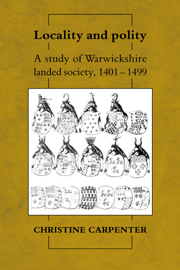Book contents
- Frontmatter
- Contents
- List of figures and tables
- Preface
- List of abbreviations
- Note on text
- 1 Introduction
- PART I STRUCTURAL
- 2 Geography, economy and regional identity
- 3 Who were the gentry?
- 4 Social mobility and the creation of estates
- 5 The exploitation of estates
- 6 Expenditure and dispersal
- 7 Conclusions: land, family and lineage
- 8 The local officers
- PART II CHRONOLOGICAL
- Appendices
- Bibliography
- Index
6 - Expenditure and dispersal
Published online by Cambridge University Press: 27 October 2009
- Frontmatter
- Contents
- List of figures and tables
- Preface
- List of abbreviations
- Note on text
- 1 Introduction
- PART I STRUCTURAL
- 2 Geography, economy and regional identity
- 3 Who were the gentry?
- 4 Social mobility and the creation of estates
- 5 The exploitation of estates
- 6 Expenditure and dispersal
- 7 Conclusions: land, family and lineage
- 8 The local officers
- PART II CHRONOLOGICAL
- Appendices
- Bibliography
- Index
Summary
So far the emphasis of this study has been on accumulation of land and of money. Dispersal of estates has been touched on only as an aspect of accumulation, a part of the price that had to be paid for heiresses. Yet this is only one element in the story; if we are to understand the mind of the late-medieval landowner we should look as closely at the demands on his lands and his purse, since these must have had a primary bearing on how he satisfied them. They took three main forms. First, there were his living expenses. What sort of lifestyle did a member of the gentry maintain? How much of his income did he spend on his daily needs? What does his expenditure tell us about his attitudes to his wealth, his lands and his social position? Secondly, there were his dealings with the rest of his family. How broadly was the family defined? Recognition of a family bond could take two forms, the one involving no more than remembrance of a relative in prayers or a small testamentary gift, the other, much more burdensome, necessitating the loss of part of the estate or its income to support a relative or provide a dowry for a daughter. This in itself will take us only part of the way, for the family might have different meanings at different times, a subject which will be explored further in the summarising chapter that concludes this first section. Thirdly, there was the salvation of the soul.
- Type
- Chapter
- Information
- Locality and PolityA Study of Warwickshire Landed Society, 1401–1499, pp. 196 - 243Publisher: Cambridge University PressPrint publication year: 1992



